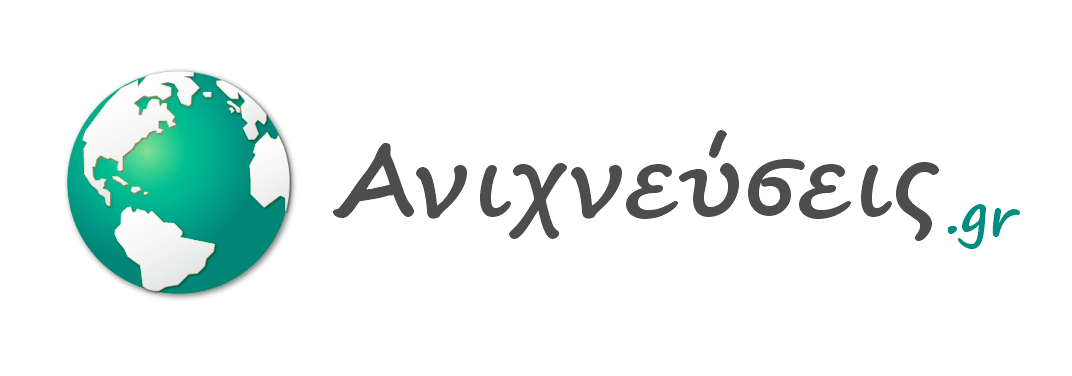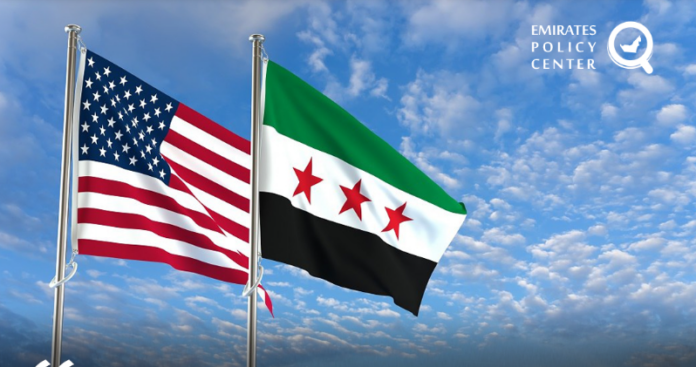Key Takeaways
- For the United States, a post-Assad Syria presents both potential opportunities and challenges. Counter-terrorism efforts against ISIS remain the cornerstone of Washington’s strategy in Syria, including support for its key ally – the Kurds.
- Washington’s political options toward Damascus will depend on the ability of Hayat Tahrir al-Sham (HTS) to respond to the concerns and demands of the international community. Washington will hold on to two major leverages: lifting HTS from the list of terrorist organizations and lifting economic sanctions imposed on Syria.
- Conditional lifting of sanctions on the new regime will depend on HTS’s efficacy in fighting ISIS, its willingness to cooperate with the Kurdish-led SDF, commitment to inclusive governance that respects the rights of Syrian minorities, as well as respect for gender equality.
The sudden collapse of the Assad regime came as a surprise to many countries in the region. The situation within Syria remains fluid and uncertain. The big question is whether the Islamist rebel groups will be able to fully consolidate control, given the enduring fragility of the Syrian state.
The leadership of the Hayat Tahrir al-Sham (HTS), the designated terrorist group that led the regime-toppling offensive, seems to recognize the imperative of consolidation and state-building. The emerging situation in Syria presents both significant risks and opportunities for the United States and its main regional ally, Israel.
With the exit of Bashar Al-Assad from Syria, Washington is now witnessing the emergence of a realignment among powers and actors across the Middle East. President Joe Biden called Assad’s ouster “a fundamental act of justice” and “a moment of historic opportunity.” And a senior Biden Administration official asserted that US policy helped bring about the weakness of the Assad regime and the “entire Iranian-backed artifice in the region,” and has “completely changed the equation in the Middle East.”
The major opportunity for Washington and Tel Aviv lies in the fact that, for the first time in half a century, Syria is no longer an Iranian or Russian proxy. For Tehran, the Assad regime was a cornerstone of its forward defense strategy and its main Arab ally as a state actor. The fall of Assad deprives Tehran of a key land bridge to its Lebanese proxy, Hezbollah, which is now in great need of Iranian support for rebuilding and rearming. Uprooted from its decades-long strategic posture in Syria, Iran is unlikely to recover from this significant setback for the foreseeable future. Russia, for its part, is facing an uncertain future as it stands to potentially lose its only strategic access to the Eastern Mediterranean. The future of the Russian naval and air bases in Syria depends on what kind of Syria will emerge once the dust settles.
Given Turkiye’s growing influence, Erdogan now holds the upper hand over Russia in Syria. In that sense the tables have turned and the balance of power in Syria has shifted from Tehran and Moscow to Ankara’s favor.
With the Iranian and Russian influence in Syria sharply diminished, the observation that Ankara has unprecedented leverage in Syria is shared by the Biden administration, as Anthony Blinken’s recent visit to Ankara attests. Turkiye already has a significant military presence in much of northern Syria, supported by its own ground forces as well as its main proxy armed militia, the Syrian National Army, formerly known as the Free Syrian Army. Turkiye’s buffer zone is likely to expand at the expense of Kurdish forces, particularly the YPG, which serves as the main American proxy on the ground.
Washington knows that Turkiye has the strongest ties to HTS. Although Turkiye does not openly collaborate with HTS, it has for years maintained discreet lines of communication and influence. These ties have come into the spotlight with the recent visits to Damascus of Ibrahim Kalin, the chief of the Turkish Intelligence Agency, and Hakan Fidan, the minister of foreign affairs.
Ankara has three main objectives in the evolving Syrian landscape:
First, to maintain and deepen its influence over HTS. Ankara wants to become the key HTS interlocutor and its main bridge to the international community.
Second, Turkiye is determined to militarily disrupt the YPG (People’s Defense Units) and its vision of Kurdish autonomy or federation in Syria. Ankara considers the YPG as the Syrian wing of the PKK (Kurdistan Workers Party), a Kurdish terrorist organization designated as such by both Ankara and Washington.
Third, and perhaps most importantly for Erdogan’s political standing at home, Ankara wants to facilitate the return of some four million Syrian refugees, a source of growing internal tension.
For Israel, Syria’s new reality is a mixed blessing. Neutralizing the Iranian and Hezbollah threat in Syria and forestalling Iran’s ability to rearm Hezbollah easily in the future are important victories for Israel. But the prospect of a former affiliate of Al Qaeda gaining power in Damascus is unsettling, to say the least. Israel will look to guard against potential spillover effects should Syria undergo a period of heightened chaos.
Mindful of these potential threats, Israel is already taking measures to enhance its security: It has deployed troops to the demilitarized buffer zone in the Golan Heights and continues to undertake strikes against strategic targets in Syria. Israeli targeted strikes in Syria in the last couple of weeks have effectively amounted to the total demilitarization of Syria. Today, there is almost nothing left of Syrian naval, air power and land force capacity.
US Interests and Strategic Vision in Syria
For the United States, a post-Assad Syria presents both potential opportunities and challenges. Certainly, the fall of a brutal dictator who was antithetical to US interests in the region and the demise of Iranian and Russian influence mark a major win for the United States. But with a former affiliate of Al Qaeda and a designated terrorist group positioned to be the primary power, the United States will face thorny challenges on how to engage and ensure against worst-case outcomes. Whether or not HTS has truly moderated, as it professes, will be central to defining Washington’s options. In remarks on December 8, President Biden acknowledged that “some of the rebel groups that took down Assad have their own grim record of terrorism and human rights abuses,” and said “we will assess not just their words, but their actions.”
In a groundbreaking diplomatic move, the US has chosen to engage with Ahmed Al-Sharaa, the HTS military leader. On December 20, Washington sent a delegation led by Barbara Leaf, the assistant secretary of state for Near Eastern affairs, to Damascus to meet with al-Sharaa. Apparently, talks focused on efforts to fight ISIS, the new Syrian administration’s policies with regard to governance and rights of various components of the Syrian society. Thus the visit included meetings with Syrian civil society leaders and activists from various backgrounds. Leaf praised al-Sharaa as “pragmatic,” noting his moderate views on women’s rights and equality. Following the meeting, Washington announced the cancellation of the $10 million reward previously offered for information leading to the capture of al-Sharaa.
Despite these diplomatic overtures, counter-terrorism efforts against ISIS remain the cornerstone of Washington’s strategy in Syria. The Biden administration remains vigilant about a potential ISIS resurgence in the country. The United States has spent nearly a decade combating the Islamic State in Syria and neighboring Iraq. While ISIS has lost almost all of what it once called its caliphate, its threat has not dissipated. On the contrary, ISIS has conducted nearly 700 attacks in Syria since January, putting it on track to triple its rate of last year.
The Assad regime forces, who had been trying to fend off the Islamic State’s desire to expand, have abandoned their positions in central Syria. While Syrian opposition fighters have already sought to fill some of the void, their numbers and inability to coordinate a complex desert campaign against ISIS pose significant challenges. It is not a coincidence that the US official visit to Damascus came on the heels of a Pentagon announcement that the US military presence in Syria has jumped from 900 to 2,000 soldiers, underscoring heightened concerns about ISIS exploiting the current vacuum. The first US response to this sudden vacuum came as quickly as the regime fell on December 8, when American aircraft struck more than 75 ISIS targets throughout central Syria.
A critical aspect of US national security interests remains the future of its Kurdish partners on the ground in northeastern Syria. For the past eight years, the United States has partnered with the Syrian Democratic Forces (SDF), a Kurdish-led coalition primarily composed of the YPG that paved the way for the fall of the Islamic State in Raqqa in 2017. The SDF is now facing a potentially critical moment. The Syrian National Army, a Turkish-backed rival militia grouping, has captured strategic towns from the SDF and now has the symbolic Kurdish city of Kobani in its sights.
A US-mediated cease-fire between these two warring factions is on the brink of collapse. Senator Lindsey Graham (Republican of South Carolina) has warned in a statement on social media that he was prepared to push for economic sanctions against Turkiye if it attacked the Kurdish forces. He said: “If Turkiye takes military action against Kurdish forces in Syria, it will jeopardize America’s interests dramatically.”
For now, the US appears committed to its Kurdish allies, as demonstrated by the December 10 visit of the CENTCOM Commander General Erik Kurilla to SDF forces in Syria. However, the incoming Trump administration may bring a shift in policy. President Trump is expected to be more receptive to Turkish proposals to replace Kurdish forces with Turkiye’s own troops and proxies in the ongoing campaign against ISIS.
One major leverage Washington holds in Syria is the country’s dire economic situation. Syria remains under US sanctions, including restrictions imposed in 2019 on financial flows to punish the Assad regime. These sanctions are cutting off Syria from financial resources it desperately needs for reconstruction and economic development.
Lifting US sanctions will be key to giving Syria’s post-Assad leadership a chance to build a different kind of government and country. Although some near-term waivers and similar measures to allow for humanitarian aid will be easier to legislate, broader delisting – at the state, group, or personal levels – will likely depend on demonstrable progress in inclusive governance and counter-ISIS efforts. If HTS continues to monopolize power as it did in Idlib – for example, by using a preselected list to limit who takes part in the imminent national dialogue process – US legislators will likely take this as a negative sign and keep sanctions in place for the foreseeable future.
Conclusions
As the euphoria over Assad’s demise gives way to Syria’s complex reality, the challenges associated with the country’s new power brokers are becoming evident. Power vacuums, infighting and threats to Syria’s minorities could provoke renewed chaos and violence. Yet Syria could also transform its nightmare into a nascent and inclusive state that reflects the diversity of its mosaic of religious sects and ethnic groups.
The main priority of the incoming Trump administration in Syria, according to Michael Walz who will be the next national security advisor, will be to keep a lid on ISIS resurgence. US leverage, bolstered by sanctions and the designation of HTS as a terrorist organization, will play a critical role. De-listing is likely to happen in the near future based on assessments on the ground. And some conditional lifting of sanctions on the new regime will depend on three main factors. First, on HTS’s efficacy in fighting ISIS. Second, willingness to cooperate with the Kurdish-led SDF, supported by 2000 American special forces. And third, commitment to inclusive governance that respects the rights of Christian, Druze, Alawite and other minorities, as well as respect for gender equality.
| Disclaimer: The views and opinions expressed in the content are solely those of the authors and do not necessarily reflect the Emirates Policy Center’s position. |




